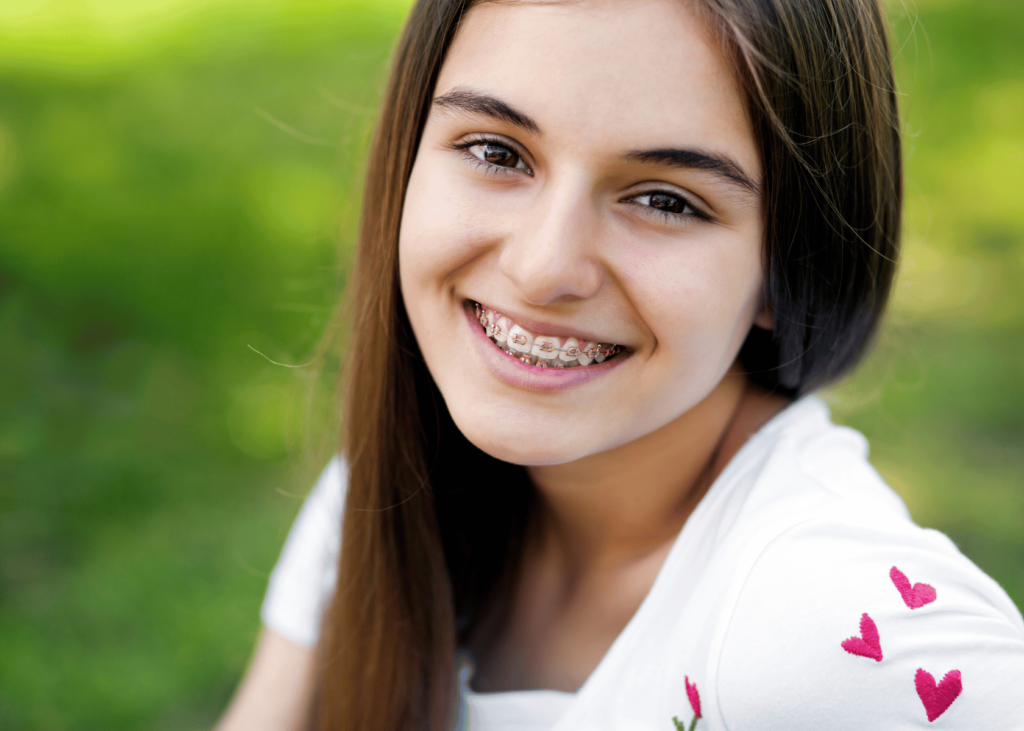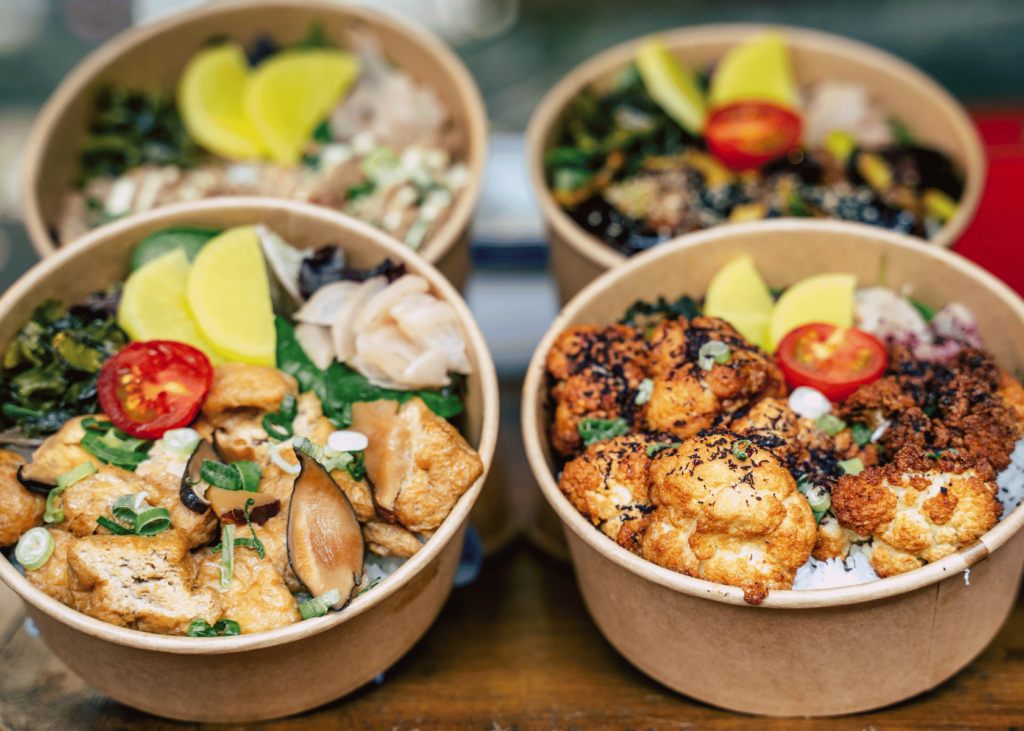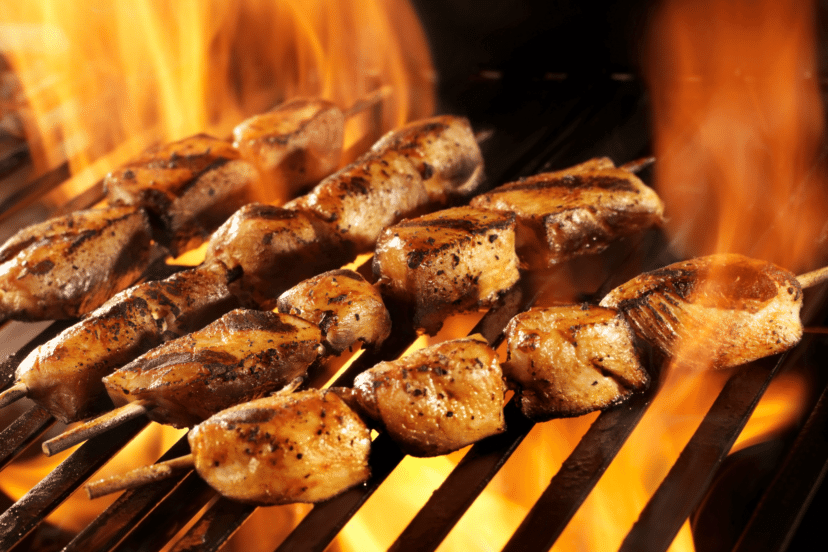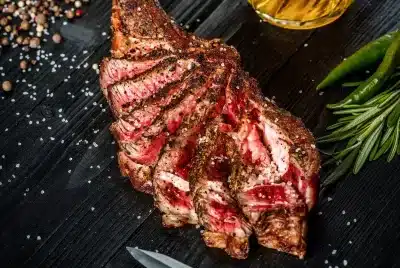Can You Eat Steak With Braces? Yes or No?
Are you a steak lover who just got braces and is now wondering if you can still indulge in your favorite cut of beef? Fear not, as we’ve got the lowdown on which steaks to avoid, how to prepare them for easier consumption, and alternative protein sources that are more braces-friendly.
In this blog post, we’ll explore whether it’s possible to enjoy a steak while wearing orthodontic appliances or if some dietary adjustments are necessary during your teeth-alignment journey.
Table of Contents
- 1 Understanding Braces And Their Impact On Diet
- 2 Can You Eat Steak With Braces?
- 3 Foods To Avoid With Braces
- 4 Tips For Eating With Braces
- 4.1 Cut Food Into Smaller Pieces To Make Them Easier To Chew
- 4.2 Chew Slowly And Carefully To Avoid Damaging Braces
- 4.3 Rinse Mouth With Water To Remove Food Particles
- 4.4 Use Braces-Friendly Utensils To Make Eating Easier
- 4.5 FAQs:
- 4.6 1. Can you eat steak with braces?
- 4.7 2. What precautions should I take while eating steak with braces?
- 4.8 3. Is it okay for me to eat other meats like chicken or fish instead of steak?
- 4.9 4. Do I have to give up my love for meat during my orthodontic treatment?
- 5 Conclusion: Eating Steak With Braces Is Possible With The Right Precautions And Alternatives
Key Takeaways on Can You Eat Stake With Braces
- You should avoid tough cuts of steak when wearing braces, but boneless and soft steaks that you proper cook can be an option.
- Alternative sources of protein for those with braces include fish, chicken or turkey, tofu, eggs, and beans.
- You should avoid hard and crunchy foods like nuts and popcorn to prevent damage to the braces while sticky and sugary foods can cause cavities.
- Cutting food into smaller pieces and chewing slowly and carefully is important for preventing damage to the wires and brackets while eating with braces.
Understanding Braces And Their Impact On Diet
Braces may restrict one’s diet due to their effect on chewing and potential damage to the wires and brackets.
How Braces Work And Their Effect On Eating Habits
Braces are orthodontic appliances that help to correct misaligned teeth or jaw issues by gradually applying pressure over time. This process involves attaching brackets to the surface of each tooth and connecting them with wires, which are periodically adjusted by an orthodontist.
The presence of these metal or ceramic components in the mouth creates certain challenges when it comes to chewing and biting food. For instance, harder foods may become difficult to break down due to the added force required and the potential risk of damaging braces’ components.
To minimize complications while eating with braces, people should opt for softer foods that require less effort in chewing (e.g., mashed potatoes) or cut items into smaller portions before consuming (like fruits).
Additionally, some patients may experience soreness during initial adjustments; incorporating cool beverages like smoothies into meals can provide relief from irritation as well as offer nourishment during this period.
Types Of Braces And Their Dietary Restrictions

There are various types of braces, each with its own set of dietary restrictions. Understanding these differences can help patients make informed decisions about their food choices while wearing braces.
| Type of Braces | Dietary Restrictions |
|---|---|
| Metal Brackets | Patients should avoid hard, crunchy, and sticky foods that can damage or get stuck in the brackets and wires. |
| Ceramic Brackets | Similar to metal brackets, patients should stay away from hard, crunchy, and sticky foods. In addition, patients should avoid foods that can stain the ceramic brackets, such as dark-colored beverages and fruits. |
| Lingual Braces | With brackets placed behind the teeth, patients should avoid hard and crunchy foods as they can be more challenging to eat and may cause damage to the braces. Soft foods are recommended. |
| Self-Ligating Braces | Although self-ligating braces have fewer components that can be damaged by food, patients still need to avoid hard, crunchy, and sticky foods that can harm the braces or get trapped in them. |
| Invisalign | Since Invisalign aligners are removable, patients can enjoy most foods without restrictions. However, patients must remove the aligners before eating and carefully clean their teeth before placing the aligners back in. |
Can You Eat Steak With Braces?
Eating steak with braces can be challenging, but it’s not impossible. In this section, we’ll explore the risks and challenges of consuming steak with braces and provide you with alternative cuts of meat that are braces-friendly as well as tips for preparing and eating steak safely.
Risks And Challenges Of Eating Steak With Braces
Eating steak with braces can be risky and challenging due to the potential for damage to the wires and brackets of the orthodontic appliance. Tough cuts of meat, such as sirloin or ribeye, can be particularly problematic when wearing braces because they require a lot of chewing.
It’s important to remember that dentists may not allow consuming steak with braces, but it ultimately depends on how it is cooked and cut. For example, boneless and soft pieces of steak may be okay to eat while well-done steaks are generally safer than medium-rare ones.
Overall, people wearing braces should take extra precautions when eating steak or any other tough meat products. It’s best if they stick with soft meats like chicken or pork or opt for ground beef instead.
Alternative Cuts Of Meat That Are Braces-Friendly
If you have braces and are looking for alternative cuts of meat to eat, here are some options that are braces-friendly:
- Boneless chicken and turkey: These meats can be tender and easy to chew when cooked properly.
- Ground beef: Instead of steak, try ground beef in dishes like tacos or spaghetti sauce.
- Fish: Many types of fish are softer and easier to chew than steak, such as salmon or tilapia.
- Pork tenderloin: This cut of pork is lean and tender, making it a good option for those with braces.
- Thinly sliced deli meats: Meats like turkey or ham can be thinly sliced and eaten in sandwiches or wraps.
- Soft tofu: For a vegetarian option, soft tofu can be a good source of protein that won’t damage braces.
Remember, even with these alternatives, it’s important to still cut the meat into small pieces and chew carefully to avoid any damage to your braces.
Preparing Steak For Braces
If you’re craving steak while wearing braces, there are a few things you can do to make it more manageable:
- Cut the steak into small pieces.
- Choose a boneless and soft cut of meat such as filet mignon or sirloin.
- Cook the steak until it’s tender and juicy to make it easier to chew.
- Avoid medium – rare or rare steaks as they may be tough and difficult to chew with braces.
- Use a knife and fork instead of biting directly into the meat.
- Remove any visible fat or gristle before eating.
- Take small bites and chew slowly and carefully to prevent damage to the wires and brackets in your mouth.
By following these simple steps, you can enjoy a delicious steak without compromising your orthodontic treatment or damaging your braces! Remember, it’s always best to consult with your dentist for specific dietary recommendations while wearing braces.
Other Protein Sources For People With Braces

For those with braces, it may be challenging to consume steak and other tough meats. Here are some alternative protein sources that can be eaten safely and comfortably with braces:
- Fish – Salmon, tuna, and other soft-textured fish can provide a healthy dose of protein without causing any discomfort to those with braces.
- Eggs – Scrambled, boiled or fried eggs are an excellent source of protein and can be cooked in various ways to add flavor.
- Tofu – Tofu is a versatile meat substitute that is high in protein and easy to eat with braces.
- Beans – Beans are an excellent source of plant-based protein that can easily be added to your diet through salads or soups.
- Chicken and Turkey – Soft chicken breasts or turkey cutlets are good alternatives for those who want meatier options but still have trouble chewing steak or beef.
Remember to chew slowly and carefully when eating these foods as well, just like with any other food consumed while wearing braces.
Foods To Avoid With Braces
Avoid hard and crunchy foods like popcorn and nuts that can damage braces, as well as sticky and sugary foods that can cause cavities.
Hard And Crunchy Foods That Can Damage Braces
Braces can be easily damaged by hard and crunchy foods, leading to discomfort and potential orthodontic setbacks. Here are some of the foods to avoid:
- Hard candies, such as lollipops or jawbreakers
- Nuts, including peanuts, almonds, and cashews
- Popcorn, which can get stuck in braces and cause irritation
- Corn on the cob, which can also get stuck in braces or damage wires and brackets
- Chips and pretzels, which can break braces or get lodged between teeth
It is important to take precautions when eating these types of foods to prevent any damage to your braces.
Sticky And Sugary Foods That Can Cause Cavities
Sticky and sugary foods should be avoided when wearing braces to prevent cavities. These include:
- Candy such as gummy bears, caramels, and taffy that can get stuck in between the wires and brackets of braces.
- Sugary drinks like soda, energy drinks, and sports drinks that can bathe the teeth in sugar for extended periods.
- Dried fruits like raisins and apricots that stick to teeth and orthodontic appliances.
- Cookies and cakes that contain high amounts of sugar and stick to teeth.
- Chewing gum that can get wrapped around braces wires or brackets.
It is essential to maintain optimal oral hygiene while wearing braces by brushing twice a day with fluoride toothpaste. Flossing once a day is also necessary to reach areas where a toothbrush cannot reach. Regular dental checkups are also vital to monitor any potential oral health concerns related to having braces.
Chewing Gum And Popcorn That Can Get Stuck In Braces
Chewing gum and popcorn are two foods that should be avoided when wearing braces. Here’s why:
- Chewing gum can stick to wires and brackets, making it difficult to remove. It can also damage orthodontic appliances by loosening them or pulling them off the teeth.
- Popcorn kernels can get stuck in between wires and brackets, causing discomfort and potentially damaging the braces. They can also cause oral health issues such as cavities if not removed properly.
Other foods that are similar in texture to chewing gum or popcorn should also be avoided, such as hard candy or nuts. It’s important to follow dietary restrictions when wearing braces in order to ensure proper treatment and avoid any additional discomfort or damage.
Tips For Eating With Braces
– Cut food into smaller pieces to make them easier to chew.
Cut Food Into Smaller Pieces To Make Them Easier To Chew
One of the best things you can do to make eating with braces easier is to cut your food into smaller pieces. This helps prevent damage to your wires and brackets while also making it easier for you to chew.
When cutting meat, such as steak, be sure to slice against the grain.
In addition to cutting your food into smaller pieces, try not to take big bites or rush through meals. Chew slowly and carefully so that you don’t accidentally bite down too hard on something.
You may also want to consider using a knife and fork instead of biting into foods like apples or sandwiches, which require more forceful chewing movements.
Chew Slowly And Carefully To Avoid Damaging Braces
It is crucial to chew slowly and carefully when eating with braces to avoid damaging the wires and brackets. Rushing through meals or biting into hard foods can cause brackets to come loose, wires to shift out of place, or even breakage.
To prevent any damage while chewing, it’s essential to take small bites and use your back teeth to grind the food down instead of using your front teeth.
Taking the time to chew properly not only protects the braces but also aids in digestion as well as overall health.
Rinse Mouth With Water To Remove Food Particles
After eating with braces, it is crucial to rinse your mouth with water to remove any food particles that may get stuck. These particles can cause damage to the braces or lead to tooth decay if left unremoved.
To make this easier, carry a water bottle around and take sips after every meal or snack. Swish the water around in your mouth for several seconds before spitting it out.
By rinsing your mouth with water regularly, you’ll keep your braces clean and avoid unnecessary dental complications down the road.
Use Braces-Friendly Utensils To Make Eating Easier
Using braces-friendly utensils can make eating with braces much easier. Soft-bristled toothbrushes and interdental brushes can help keep teeth clean, while floss threaders can help navigate wires and brackets during oral hygiene routines.
When it comes to eating, using a small fork or spoon instead of a large one can help prevent accidental damage to braces. Additionally, cutting food into smaller pieces or using a knife that is not serrated can also make chewing more manageable for those with braces.
FAQs:
1. Can you eat steak with braces?
Yes, you can but it is advisable to cut the steak into small pieces and chew carefully to avoid damaging your braces or brackets.
2. What precautions should I take while eating steak with braces?
To prevent any damage, we advise you to cut the steak into bite-sized pieces, chew slowly and be mindful of the meat getting stuck in between your teeth. Rinsing your mouth and brushing afterwards can help remove any food particles left behind.
3. Is it okay for me to eat other meats like chicken or fish instead of steak?
Yes, softer meats like chicken or fish are easier on your braces. However, it is tough to cut beef such as sirloin or ribeye.
4. Do I have to give up my love for meat during my orthodontic treatment?
No, having braces does not mean that you have to give up all foods that require chewing; in fact a balanced diet rich in protein is important for healthy teeth and gums. But be sure to always take necessary precautions while consuming harder food items!
Conclusion: Eating Steak With Braces Is Possible With The Right Precautions And Alternatives
In conclusion, it is possible to eat steak with braces as long as you take the necessary precautions and alternatives. While tough cuts of meat should generally be avoided, soft boneless steaks that are properly cooked can be a good option.
It’s also important to cut your food into smaller pieces and chew slowly and carefully to avoid damaging your braces. If you’re not sure if a certain food is safe to eat with braces, always check with your dentist or orthodontist first.
*We may earn a commission for the purchases made using our links. Please see our disclosure to learn more.




